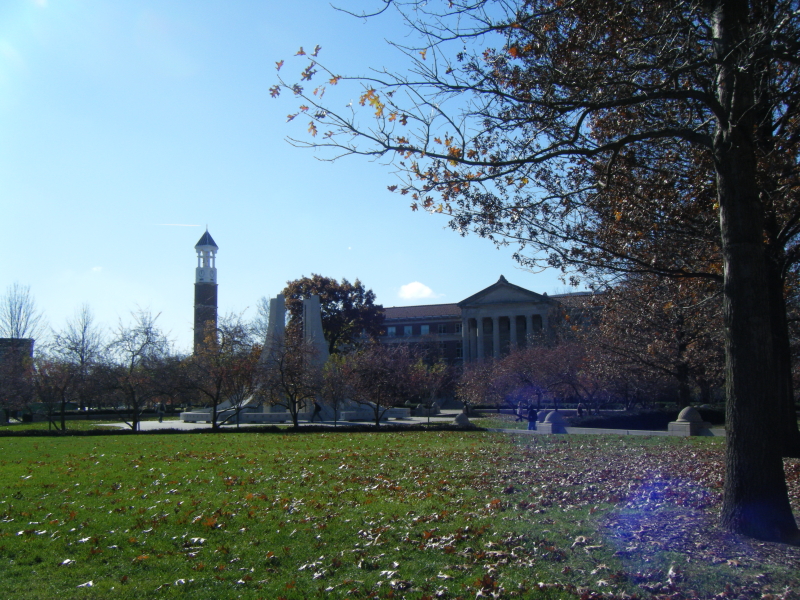As I fly over the vast stretch of mountains that rim the California central valley, it becomes apparent to me that all this talk of drought cannot be far from reality. It becomes clear that the needs of the past will weigh heavily on the demands of the future, that water rationing is becoming a reality.
In these months, in California, I usually think of the mountains and hills as green and grassy, fed by the winter rains. Granted, as one heads south in this state the rain becomes less likely (and more destructive, prone to inducing mudslides). Still, all I see are vast stretches of a dark, corduroy brown painting a fractal landscape that itself gives way to a dusty haze of unpatterned flatlands in the east.
My flight takes me to Burbank, a short hop from Pasadena and my destination: Caltech. My HEP seminar today will be a developed version of the talk I gave last fall [1]. My focus on the low-mass Higgs will remain . . . invisible, shall we say . . . but the glimpse of the bottomonium ground state has evolved into a landscape since November and I want to share that work with my Caltech colleagues.
There is much that has now come from the rich sample of Upsilon mesons that we secured last year before BaBar shut down for good. We have glimpsed the bottom of bottomonium; we have probed for low-mass dark matter and begun to turn the pages on the story of the low-mass Higgs boson; we have made the most sensitive probe of lepton flavor violation in bottomonium to date; we have charted the hadron cross-section above the Upsilon(4S) with unprecedented precision, revealing an intriguing quantum mountainscape rife with peaks and valleys, strange shoulders and plateaus.
I am grateful for all the hard work of my colleagues. Many of them are moving on, or have moved on, to greater greener pastures. The LHC lures many, despite the painful delay of operations due to the explosion in the ring. Neutrinos beckon, their evasiveness a call to arms in my field. Dark matter – elusive dark matter – tempts us with its cosmic reach but teases us with its subatomic origins. Gamma rays, x-rays, cosmic rays, all raining down on Earth, glimpsed by orbiting detectors and vast arrays of ground-based observation stations, all pointing back to some of the most cataclysmic events in the known universe.
How can one not be pulled away from what now seems like past glories? It kills me – there is so much data at BaBar, at Belle, at the Tevatron. And yet, we look to the future. Always looking to the future.
There are many questions that now stir about the stewardship of datasets like those at BaBar. A colleague of mine, one who worries deeply about this issue, noted that for the first time in history there may be no experiment in the near future which supercedes the datasets of BaBar and Belle. That means that in the next 5-20 years, there may be no experiment that yields a more impressive dataset containing the physics of the past dataset. This means that it becomes a moral imperative to find a way to hand this data to future generations, sans all the complex working of the full-blown software and hardware systems needed to first capture and analyze it.
The future, it seems, is rich not just with the superceding of the old but the caretaking of the old. Forgetting the past is not wise in physics, nor in any other human pursuit. The question is: how to write it down?
Today, at Caltech, I will focus on the discoveries of the recent past. The past is what we think we know, and in the dogged pursuit of the future, of all the things we do not yet understand, we must understand the past.


